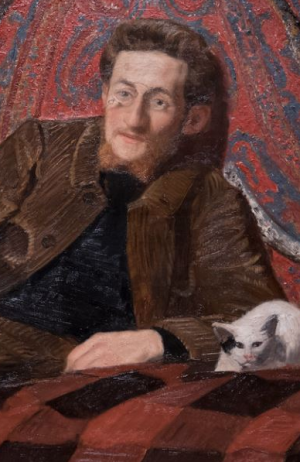Jean Puy ( - )

Born in 1876 in Roanne (Loire) into a family of industrialists, Jean Puy entered the École des Beaux-Arts in Lyon at the age of 19. He learned drawing and painting in the studio of Tony Tollet. In 1898, he moved to Paris. After a first disappointing experience at the Jullian Academy, he enrolled at the Camillo Academy, where he worked in the studio run by Eugène Carrière. There he met Derain and Matisse for whom he developed an immediate sympathy followed by a long friendship.
From the beginning of the century, he became known to the public at the Salons des Indépendants and the Salons d'Automne, where he was among those who were talked about: Matisse, Derain, Marquet, Manguin, Camoin etc.
Of course, in 1905 Jean Puy shared with them the outraged clamor of the press commenting on the "famous" Salon d'Automne and thus became one of the so-called Fauves.
Between 1900 and 1905, the young artist achieved rapid success through exhibitions at the Indépendants, the Salon d'Automne and at Berthe Weill, the "little Mother Weill" who believed in young talent.
From 1905, with his entry at Vollard, one of the great art dealers, followed his notoriety. For a young painter, being introduced to Ambroise Vollard is an honor, being noticed and chosen is the apotheosis. Thanks to Vollard, Jean Puy enters the greatest collections in the world: Shtushkin, Morosov in Russia, Hahnloser in Switzerland.
Jean Puy is an independent painter; since his beginnings, he follows his own way without letting himself be influenced and preoccupied by the intellectual concerns of his friends. Impressionist for a moment, pointillist for a moment, he became a fauve for a while without overflowing, that is to say without reaching the deformation that he considered as an excess among his friends. The path of this independent artist is determined by an intense love of life, of reality and of nature. His painting resembles a chamber music as George Besson would say.
